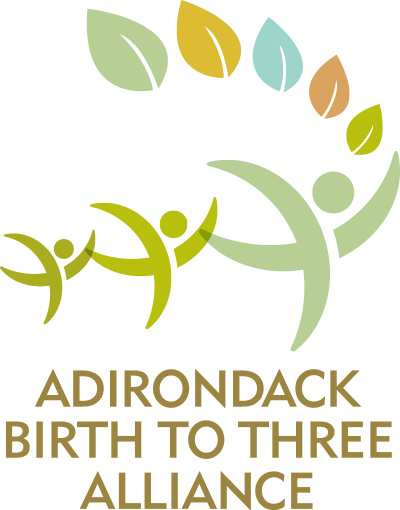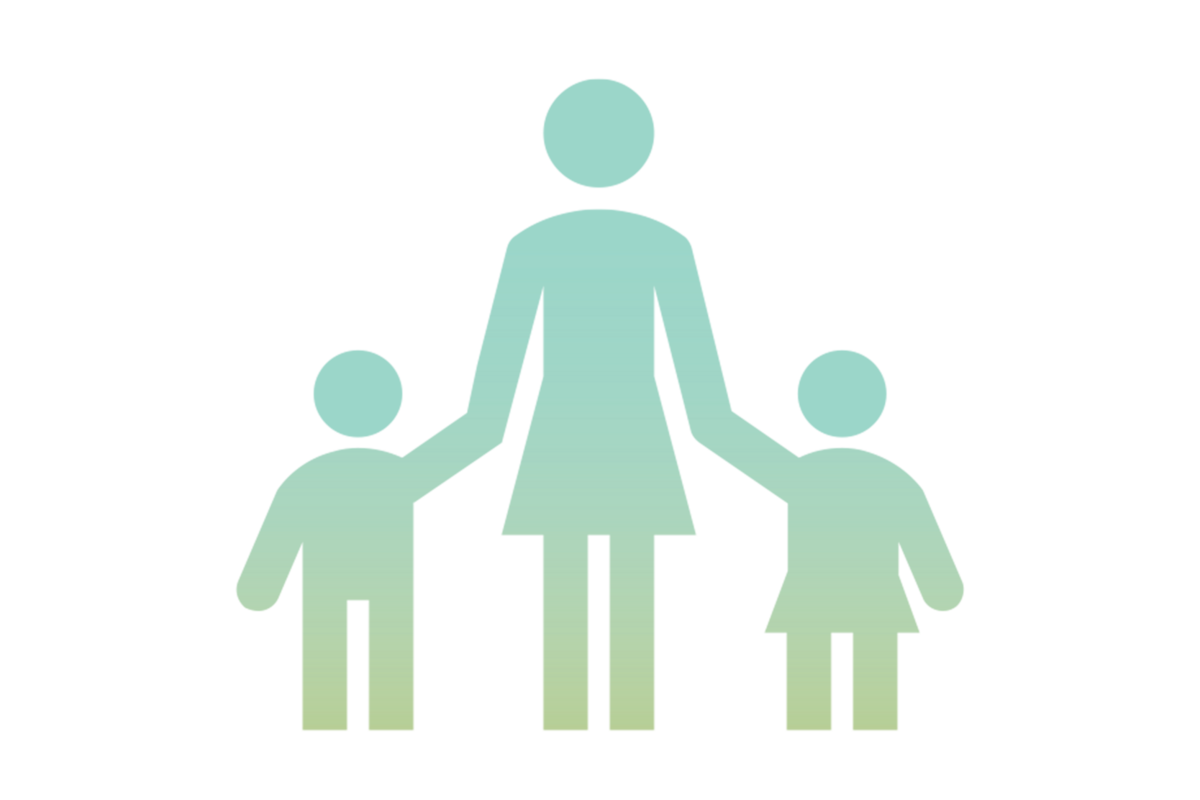New York State Fiscal Year 2022-23 Budget Highlights
A look at how the Adirondacks can benefit from funding for early childhood programs
The 2022-2023 New York State Budget is a lot to wade through, so we compiled a summary that touches on important components relating to early childhood programs and services and what the implications are for the Adirondacks. Most of the information included in this summary was drawn from the following sources: SCAA "Last Look at the 2022-23 State Budget" and analyses done by Kids Can't Wait and Hinman Straub. (Click here to download a pdf of this summary.)
Child Poverty
- Supplemental Child Credit for Tax Year 2021 - provides a supplemental payment of the Empire Child Credit for Tax Year 2021 that is equal to 100 percent of the credit if your income is less than $10,000; 75 percent if your income is between $10,000 and $25,000; 50 percent if your income is between $25,000 and $50,0000; and 25 percent if your income is above $50,000. Children under age four remain excluded from the credit entirely. Adirondack Impact: Low-income working parents of children aged 4 and above will receive an increase in their state tax credit.
- Earned Income Tax Credit – includes a supplemental enhanced New York State Earned Income Tax Credit (EITC), alongside the current earned income tax credit, for the 2021 tax year to eligible individuals and families. The enhanced credit will pay a supplement equal to 25% of the current credit. Adirondack Impact: Eligible individuals and families will receive an increase in their state tax credit.
Child Welfare
- Preventive, Protective, Independent Living, Adoption, and Aftercare Services - maintains funding at $610 million for preventive, protective, independent living, adoption, and aftercare services. It also continues the requirement that $382 million of these funds be drawn from the TANF Flexible Fund for Family Services (FFFS). The requirement for localities to draw from FFFS first is effectively a $40 million increase to the amount localities must spend on child welfare before drawing down a portion of preventive services funding from the State. This requirement is effectively a $25 million cut to preventive services funding. Adirondack Impact: The requirement to draw down increased levels of FFFS will limit local social service districts in accessing preventive service funding.
- Funding for all child welfare services were maintained at existing levels and reimbursement rates. This includes the Foster Care Block Grant, Open-Ended Preventive Services; Community Optional Preventive Services (COPS), Post Adoption and Kinship Care Services, and Hoyt Family Trust Fund. Adirondack Impact: No change in funding and services.
Early Childhood Education
Child Care Affordability
- Subsidy eligibility for low-income working families - increases eligibility for child care subsidies from 200 percent to 300 percent of poverty ($83,250 for a family of four). It also limits the amount that parents receiving subsidies pay for child care to no more than 10% of income. Families determined eligible will maintain eligibility for a 12-month period. Adirondack Impact: This increase in subsidy eligibility will make child care affordable for over a thousand working families in the Adirondacks.
- Subsidy eligibility for parents pursuing higher education – removes the work requirement for subsidy eligibility for students pursuing higher education. Adirondack Impact: Parents pursuing higher education will be more able to afford child care.
Child Care Programs, Staff, and Provider Supports
- Child care program reimbursement rates – increases the rate that the state pays child care providers from 69 percent of the market rate to 80 percent. In addition, the state will reimburse providers for up to 24 absences per annum. Adirondack Impact: This increase in subsidies along with an expected increase in the market rate will result in 10-15 percent increase in the amount that the state pays programs for serving children receiving child care subsidies. Paying for up to 24 absences will greatly reduce a significant source of lost income.
- Support for regulated child care providers – includes $343 million which will be distributed through the child care stability program to providers across the state. Programs are required to use 75 percent of these funds for the workforce. Adirondack Impact: Child care programs will receive state funding to address program expenses and increase salaries for staff and providers.
- SUNY/CUNY campus-based child care – includes $15.6 million for child care centers on SUNY and CUNY campuses allowing for child care programs to be established at all public colleges and universities. Adirondack Impact: The increased funding will support the development of a child care center for Clinton County Community College.
- Child Care Capital Fund – includes $50 million for the construction, reconstruction, rehabilitation, improvement, furnishing, or equipping of new facilities and alterations and improvements to existing facilities for eligible child care providers. Adirondack Impact: Unknown, since it is expected that the finding will be allocated via a competitive process.
Prekindergarten Program
- Prekindergarten program expansion – includes $125 million this year for Prekindergarten expansion outside of New York City. Adirondack Impact: This funding will allow for expansion of prekindergarten programs across the region. Because the funding is likely to be allocated through a competitive process, there is no way to estimate how many children will have access to the program.
- Regulatory flexibility for community-based providers - includes provisions that would allow school districts to seek waivers allowing personnel employed by an agency collaborating with a school district to provide pre-kindergarten services and licensed by an agency other than the department to meet staff qualifications set by that agency. Adirondack Impact: This provision would allow for more child care centers, Head Start programs and others to provide Prekindergarten programming providing additional opportunities for families.
Early Intervention Program
- Early Intervention Program - includes $205 million, an increase of $40 million over last year. The budget does not include a vital provider rate increase. It is expected that this increase will occur outside of the budget process. Adirondack Impact: Despite the increase in funding, without an increase in reimbursement rates there is no expected impact.
Food and Nutrition
- Nutrition Outreach and Public Education Program (NOEP) – appropriates $4.2 million to continue this program including a $1 million increase that will be matched by federal funds. NOEP helps to identify individuals and families eligible for the SNAP program and supports them in obtaining benefits. Adirondack Impact: The increase in funding will allow expansion of this service to Essex and Hamilton counties. Up to this point, Essex and Hamilton were two of the six counties that have not benefited from these services due to a lack of funding.
- Women, Infants & Children (WIC) - includes $26.25 million to provide nutrition education to pregnant women, infants, and children (level funding). Adirondack Impact: No change in funding and services.
Health Care
- Postpartum Care - includes language for Medicaid to provide post-pregnancy coverage for mothers for up to one year, increasing from the current 60 days after pregnancy, contingent on federal approval. The budget also requires both prenatal and postpartum services as "standard coverage" to be reimbursed when determined necessary by providers. Adirondack Impact: Approximately 850 mothers in the Adirondacks will receive comprehensive health care coverage (including mental health) for up to a year after giving birth. This coverage should greatly improve health outcomes for postpartum women and their babies.
- Medicaid Coverage of Maternal Health Services – allows Medicaid payment for certain prenatal and postpartum services, contingent on federal approval. These services include nutrition services provided by certified dietitians and nutritionists; care coordination, case management, and peer support; patient navigation; services by licensed clinical social workers; dyadic services; Bluetooth-enabled devices for remote patient monitoring; and other services determined by the Commissioner of Health. Adirondack Impact: Approximately 850 mothers giving birth in the Adirondacks will benefit from these services, which will potentially improve maternal health outcomes and reduce maternal mortality. The provision allowing reimbursement for dyadic services will potentially allow for the addition of developmental specialists in additional pediatric practices.
- Child Health Plus - includes $11 million to improve access to children's mental and behavioral health services by aligning Child Health Plus services with Medicaid services. It also eliminates the $9 per month premium for children whose family household income is less than 223% of the federal poverty level. In addition, pregnant women enrolled in Child Health Plus will retain eligibility for 12 months postpartum. Adirondack Impact: These changes will make important services available to low-income working families.
- Local Public Health Funding - increases local public health funding (Article 6) to $189.2 million, a $25.7 million increase. Adirondack Impact: The increased funding for local health departments will contribute to healthier communities across the region.
Home Visiting
- Healthy Families New York- increases funding for Healthy Families New York for a total of $41.5 million, an increase of $11 million. Adirondack Impact: This increase will potentially allow Healthy Families NY to expand to Essex, Hamilton, and Warren counties.
(Click here to download a pdf of this summary.)


